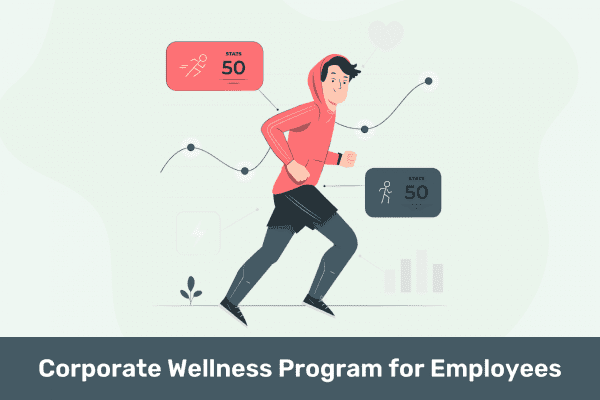Introduction
Technology has become an integral part of our lives, transforming the way we work and live. In the realm of workplace well-being, technology has emerged as a powerful tool to improve employee health, happiness, and productivity. From mobile applications to wearable devices and virtual platforms, technology offers innovative solutions that promote and improve wellbeing at work.
In this digital age, the benefits of leveraging technology for well-being are evident. It provides employees with convenient access to resources and data-driven insights to make informed decisions about their health and well-being. Whether it’s promoting physical fitness or overall wellness, technology has the potential to revolutionize the way we approach well-being in the workplace.
This article explores the various ways in which technology can improve well-being at work. We will delve into the advantages of wellness apps, wearable devices, virtual well-being programs, telehealth, data analytics, and more. By harnessing the power of technology, organizations can create a culture of well-being, foster employee engagement, and ultimately enhance the overall work environment.
Join us as we explore how technology can improve wellbeing at work and discover how it can positively impact the lives of employees, leading to healthier, happier, and more productive workforces.
What is Wellbeing Technology?

Wellbeing technology, also known as wellness technology or digital health solutions, refers to the use of technology to support and enhance individual well-being and overall health. It encompasses a wide range of digital tools, applications, devices, and platforms designed to monitor, track, and improve various aspects of wellness, including physical fitness, mental health, nutrition, stress management, and overall lifestyle.
Wellbeing technology leverages the power of digital advancements to provide individuals with personalized and accessible resources for managing their health and well-being. These technologies often utilize data collection, analysis, and feedback mechanisms to provide insights, guidance, and motivation to users. Some common examples of wellbeing technology include:
1. Wearable Devices
Devices such as fitness trackers, smartwatches, and activity monitors are equipped with sensors to track physical activities, heart rate, sleep patterns, and other biometric data. They provide users with real-time feedback, goal setting, and reminders to encourage healthy habits.
2. Mobile Applications
There is a wide range of mobile apps available that focus on different aspects of well-being, such as fitness tracking, meditation and mindfulness, nutrition tracking, sleep monitoring, stress reduction, and mental health support. These apps often offer features like goal setting, progress tracking, educational content, and social support.
3. Telehealth and Remote Monitoring
Telehealth technologies enable individuals to connect with healthcare professionals remotely, allowing for virtual consultations, monitoring of chronic conditions, and access to medical advice and support from the comfort of their homes. Remote monitoring devices can transmit health data to healthcare providers for continuous monitoring and timely interventions.
4. Digital Wellness Platforms
Online platforms or portals provide users with comprehensive resources and tools to manage their well-being. These platforms may offer personalized health assessments, digital coaching programs, educational content, goal tracking, social support networks, and incentives to engage users in healthy behaviors.
5. Mental Health Apps and Platforms
With the growing emphasis on mental health, various apps and platforms have emerged to provide support and resources for mental well-being. These solutions often include relaxation techniques, cognitive-behavioral therapy (CBT) exercises, mood tracking, and access to mental health professionals through virtual therapy sessions.
The benefits of wellbeing technology include increased accessibility to health resources, personalized guidance, enhanced self-awareness, motivation for behavior change, and the ability to track progress over time. However, it is essential to ensure the privacy and security of personal health data when using these technologies.
Overall, wellbeing technology plays a significant role in empowering individuals to take an active role in managing their health and well-being. By leveraging digital tools and platforms, individuals can access resources and support systems that assist them in making informed decisions, adopting healthier habits, and achieving their wellness goals.
Also Read:
Top 5 Ways to Promote Wellbeing in the Workplace
How Technology Can Improve Wellbeing at Work?
Technology can significantly improve wellbeing at work by providing innovative solutions that support employees’ health. Here are several ways in which technology can enhance workplace well-being:
1. Remote Work and Flexibility
Technology enables remote work and flexible work arrangements, allowing employees to have a better work-life balance and reduce stress associated with commuting. Remote work options can lead to increased job satisfaction and improved well-being by providing employees with more control over their work environment and schedule.
2. Wellness Apps and Platforms
A survey conducted by the National Business Group on Health revealed that 75% of employers offer wellness apps to their employees. Technology offers a wide range of wellness apps and platforms that provide employees with resources for overall well-being. These apps often include features like exercise routines, mindfulness exercises, sleep tracking, nutrition trackers, and mental health support tools.
3. Digital Health Assessments
Technology allows for the implementation of digital health assessments that help employees understand their current well-being status. These assessments can provide personalized recommendations and resources based on the individual’s health data, empowering employees to make informed decisions about their well-being.
4. Wearable Devices
Research published in the Journal of Occupational and Environmental Medicine found that employees using wearable devices experienced a 22% increase in physical activity and a 29% decrease in health risks. These devices, combined with technology-driven feedback and goal tracking, encourage employees to adopt healthier lifestyles.
Wearable devices, such as fitness trackers and smartwatches, can monitor employees’ physical activity, heart rate, sleep patterns, and stress levels. By providing real-time feedback and insights, wearable devices encourage employees to engage in healthy behaviors and track their progress toward wellness goals.
5. Online Mental Health Support
According to a study by Deloitte, 92% of organizations plan to expand their mental health and well-being offerings. Technology facilitates access to mental health resources and support through online platforms, teletherapy, and mental health apps. Employees can access therapy sessions, counseling, and self-help resources conveniently and confidentially, reducing barriers to seeking mental health support.
6. Gamification and Challenges
The Global Wellness Institute reports that gamified wellness programs can increase engagement by up to 60%. Technology can gamify wellness initiatives by introducing challenges, competitions, and rewards for achieving health and well-being goals. Gamification motivates employees to actively participate in wellness programs, creating a sense of camaraderie, fun, and healthy competition.
7. Virtual Well-being Programs
Virtual well-being programs leverage technology to provide employees with access to virtual fitness classes and educational webinars. This allows employees to engage in well-being activities from any location, promoting inclusivity and convenience.
8. Data Analytics and Insights
Technology enables the collection and analysis of data related to employees’ well-being. Organizations can identify areas for improvement, and tailor wellness initiatives to better meet employees’ needs.
While technology can be a powerful tool for boosting workplace well-being but it should be implemented thoughtfully and with consideration for privacy and data security. Organizations should also ensure that technology complements human interaction and support, rather than replacing it entirely.
By leveraging technology effectively, employers can create a workplace environment that promotes employee well-being, engagement, and productivity. It empowers employees to take ownership of their health and provides them with convenient and personalized resources to support their well-being journey.
Final Thoughts
Technology provides convenient and personalized resources for employees to enhance their well-being. Among the many platforms available, Woliba stands out as a comprehensive and user-friendly solution for workplace well-being.
By leveraging Woliba’s technology, organizations can create a positive work environment that prioritizes the health and well-being of their employees. To experience the benefits of Woliba and transform your workplace well-being, contact Us today!





